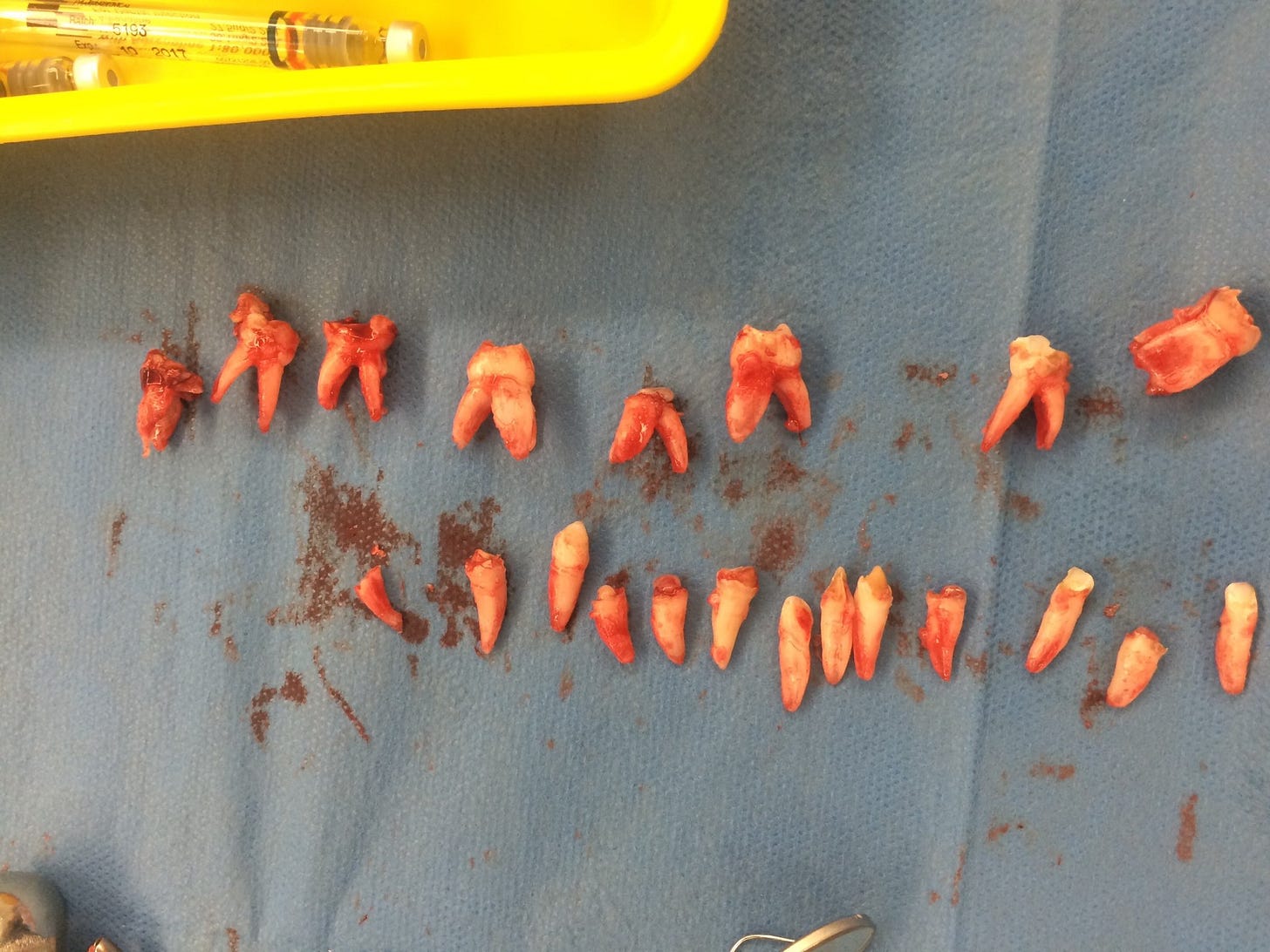Water fluoridation - are we doing enough to prevent tooth decay?
Adding fluoride to tap water to prevent tooth decay is one of our greatest public health achievements, yet there are still many communities that are missing out.
This week I read an article in the Mansfield Courier about water fluoridation that piqued my interest from a few angles. I spent some of my childhood growing up in Mansfield between 1978 and 1984. Back then the dental problems being experienced by the children of Mansfield were so significant that my dad (who was the principal of Mansfield Primary School at the time) worked with the local dentist to implement a fluoride brushing program to help prevent tooth decay. [I don’t know how influential this backstory was to my eventual career path, but it’s certainly an illuminating coincidence.]
Water fluoridation had only recently been introduced in Melbourne in 1977, following the successful implementation in Hobart (1964), Canberra (1964), Sydney (1968), Perth (1968), Adelaide (1971) and Darwin (1972). Brisbane notably delayed the introduction of water fluoridation until 2008. There would have been no expectation that a small rural community like Mansfield would be fluoridated at that time, hence the alternate fluoride brushing plan.
Fast forward more than 40 years, and it's hard to believe that despite the overwhelming evidence supporting the benefits of water fluoridation, that communities such as Mansfield are missing out on this fundamental public health measure.
Tooth decay remains one of the most prevalent health problems and the leading cause of preventable hospitalisation in Australian children. One in three children suffer from tooth decay by the age of 5-6 years, and it is not uncommon for thousands of young children to have teeth extracted as a result of decay. These problems are exacerbated in rural areas, where there is general fewer dental practitioners impacting on the ability to deliver preventive care.
NHMRC strongly recommends community water fluoridation as a safe, effective and ethical way to help reduce tooth decay across the population. NHMRC supports Australian states and territories fluoridating their drinking water supplies within the range of 0.6 to 1.1 milligrams per litre (mg/La ).
One of the main benefits of water fluoridation is that it is extremely cost-effective - for every dollar spent on water fluoridation, the health system saves between $7 and $18 in avoided dental treatment costs for dental caries, amounting to $1 billion in avoided health care and related costs over the past 25 years in Victoria. Australia’s National Oral Health Plan 2015-24 has an ambitious goal to extend access to the benefits of water fluoridation to communities with populations greater than 1000.
The million dollar question - what is holding us back?
Funding. It is estimated that a water fluoridation treatment plant would cost around $1 million to commission – literally a drop in the ocean that is the state health budget. In Victoria there are around 65 regional towns across 37 water supply systems with populations ranging from 2,000 to 10,000 people that would all benefit from water fluoridation. We need the Victorian government to commit to improving oral health through the most cost-effective measure possible, by allocating funding in the upcoming State budget to enable these communities to implement water fluoridation. If it’s good enough for us in Melbourne, then it should be good enough for the rest of Victoria.
Water fluoridation myths and conspiracies (and why they are wrong).
Despite evidence over nearly 70 years demonstrating both the safety and effectiveness of water fluoridation, many myths and conspiracies persist. These include fluoride isn’t natural, adding it to our water supplies doesn’t prevent tooth decay and it causes conditions ranging from cancer to Down syndrome.
1. Fluoride isn’t natural
Fluoride is found in all natural water supplies at some concentration. This is because fluoride (usually in the form of calcium fluoride) is a naturally occurring substance found in many rocks which then leaches into ground and surface water. Ocean water contains fluoride at around 1 part per million, about the same as levels of fluoridated drinking water in Australia (which is why sharks have such great teeth).
The natural level of fluoride in the water varies depending on the type of water and the type of rocks and minerals it’s in contact with. There are many places in Australia where fluoride occurs naturally in the water supply at optimum levels to maintain good dental health – places like Portland and Port Fairy in Victoria have naturally occurring fluoride in their water at 0.7-1.0 parts per million.
The three main fluoride compounds generally used to fluoridate water are: sodium fluoride, hydrofluorosilicic acid (hexafluorosilicic acid) and sodium silicofluoride. All these fully mix (dissociate) in water, resulting in the availability of fluoride ions to prevent tooth decay. Regardless of original source (whether it is natural or artificial), the end result is the same – fluoride ions in the water.
2. Water fluoridated doesn’t prevent tooth decay
Study after study dating back to the 1940s continues to demonstrate that water fluoridation prevents tooth decay. The initial discovery came about when dental researchers were trying to figure out why some towns had much lower levels of tooth decay than others, and they were able to measure differences in the fluoride levels of the drinking water.
Following this exciting discovery, a study commenced that involved the artificial fluoridation of water supplies in one community, and comparing the tooth decay rates to a neighbouring community with no fluoride. The study had to be discontinued after six years because the benefits to the children in the fluoridated community were so obvious it was deemed unethical to not provide the benefits to all the children, and so the control community water supply was also fluoridated.
The National Health and Medical Research Council (NHMRC) published an extensive update of the evidence on the impact of fluoridated water on human health in 2017. This showed that children and teenagers who had lived in areas with water fluoridation had 26-44% fewer teeth or surfaces affected by decay, and adults had 27% less tooth decay. My own research* showed a consistent 23-25% reduction in tooth decay in a subset of young Australian adults in 1996, 2002/3 and 2008. Of course there are a multitude of factors likely to influence the impact across populations, including diet, access to dental care, and the amount of tap water people drink. But the evidence is pretty clear that water fluoridation works.
3. Water fluoridation causes cancer
Cancer, Down syndrome, cognitive problems, lowered intelligence, hip fracture, chronic kidney disease, kidney stones, hardening of the arteries, high blood pressure, low birth weight, premature death from any cause, musculoskeletal pain, osteoporosis, skeletal fluorosis (extra bone fluoride), thyroid problems. You name a health problem, and chances are there will be someone claiming that it is caused by water fluoridation.
Again, the evidence is pretty clear – the NHMRC found there was no reliable evidence to suggest water fluoridation at current levels in Australia of 0.6-1.1 parts per million was associated with any of those problems.
The studies that claim to show adverse health effects are generally in areas where there are high levels of fluoride occurring naturally in the water supply – generally more than 2-10 parts per million or more (up to 10 times levels found in Australian water). These studies often have methodological issues, with small sample sizes and lack of controlling for other factors that may be associated with adverse health outcomes.
There is one adverse outcome associated with fluoridated water – dental fluorosis, or the hypomineralisation of the tooth enamel. This is caused by the ingestion of too much fluoride (from any source) whilst teeth are forming during early childhood, and is most often linked to excessive swallowing of toothpaste. When dental fluorosis occurs, it is mostly very mild or mild, and does not affect the either the function or appearance of the teeth. Moderate dental fluorosis is very uncommon, and tends to include brown patches on the tooth surface. Severe dental fluorosis is rare in Australia.
Adding fluoride to tap water to prevent tooth decay is one of our greatest public health achievements, with a large body of evidence gathered over more than 70 years around the world showing it helps to prevent tooth decay and is safe.
* Not a Google search. I conducted 3 large studies investigating association between water fluoridation and dental caries in Australian Army recruits between 1996 and 2008.




